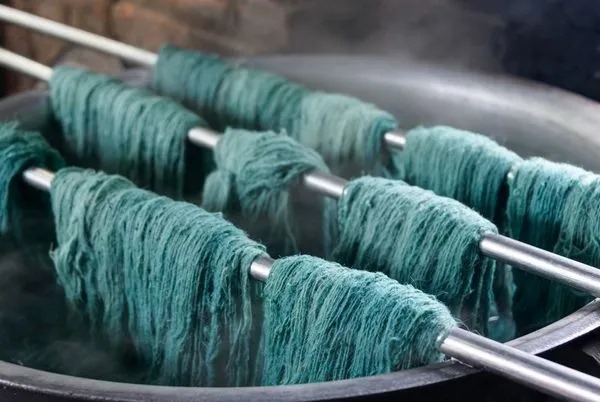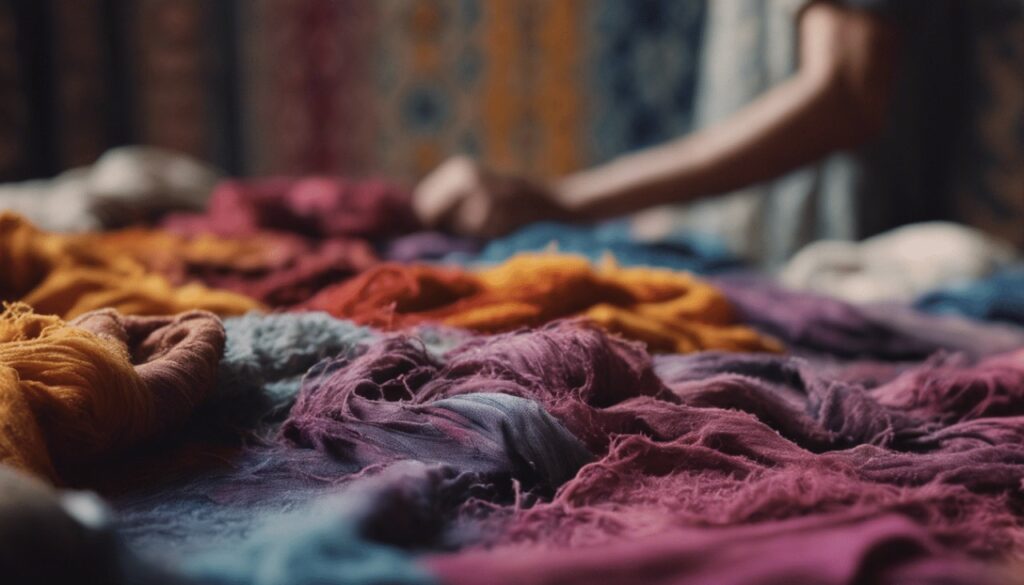The Apparel Digest Report
Human civilization relies on textiles for fashion, industry, and culture. Dyeing fabrics gives them brilliant hues, which is intriguing. Dyeing textiles is an integral part of textile manufacture and has been practiced for thousands of years throughout cultures. Dye history, processes, and effects in textiles and other industries will be examined in this article.
Egyptian, Chinese, and Indian civilizations practiced textile dyeing since 2600 BCE. These cultures dyed their garments with plant, mineral, and insect dyes. Ancient Egypt and India revered indigo for its vivid blue colour, which symbolized monarchy and prosperity. The Aztecs utilized cochineal, a crimson insect dye, and colonial Europe valued it.
Colour in textiles has always expressed significance. Purple from the murex snail was reserved for emperors and high-ranking officials in ancient Rome. From wedding dresses to ceremonial robes, traditional Indian textile hues symbolized culture and religion.
Textile colour became more accessible as dying technology improved. Synthetic dyes revolutionized the textile business in the 19th century. Synthetic dyes increased colour variety, production speed, and colour fastness, making colourful textiles more affordable and accessible.
Natural dyes come from plants, animals, and minerals. Once the main way to colour textiles, these dyes are now largely employed in niche industries like organic and eco-friendly fashion due to their narrow colour range, lower colour fastness, and greater production costs.
Planted dyes come from leaves, roots, fruits, and flowers. Turmeric dyes yellow, while madder root dyes red.
– Animal-based dyes: Insect-derived cochineal and mollusk-derived Tyrian purple are examples.
Mineral-based dyes: Some ancient cultures dyed textiles with minerals. Reddish tones were typically achieved with ochre, an iron oxide.
Traditional crafts, artisanal manufacture, and environmentally concerned consumers who want non-toxic materials still prefer natural dyes. In 1856, William Henry Perkin discovered synthetic dyes, which are now standard in textile production. Perkin’s discovery of mauveine, the first synthetic dye, revolutionized dyeing by allowing brilliant, long-lasting colours at a fraction of the expense of natural dyes.
Acid dyes are used for wool and silk. Their brilliant hues are less effective on plant-based textiles. Reactive dyes work well on cellulose-based textiles like cotton and linen. These dyes chemically link with fabric for colour fastness and durability. Direct dyes are water-soluble dyes that perform well with cellulose fibres and can be applied directly to fabric without a mordant. Disperse dyes, used for polyester, are insoluble in water and require heat or pressure to cling to cloth.
Synthetic dyes allow for a wide range of colours, tints, and effects, enabling fashion and textile design breakthroughs. Synthetic dyes pollute water and produce chemical waste, which has raised interest in sustainable dyeing.
This procedure totally submerges fabric in a dye bath to evenly dye the fibres. Controlling dye bath temperature, time, and agitation produces diverse effects. Industrial textile production uses immersion dyeing.
Tie-dye resist-dying involves tying or binding fabric before dyeing. Due to dye resistance, knotted sections provide dramatic colour contrasts. The 1960s counterculture popularized this method, which has ancient Indian and Japanese textile roots.


Another resist-dyeing method is batik, which uses wax in elaborate patterns. Beautiful, complex designs come from waxed areas resisting dye. Indonesians employ batik to make magnificent ceremonial robes.
Modern textile manufacture uses printing to add dyes in patterns. Screen printing uses a mesh screen to apply dye in regulated areas, while digital printing prints high-resolution, full-colour images directly onto cloth.
Colour shapes fashion trends, consumer behaviour, and the worldwide textile market. Designers employ colour to express mood, creativity, and trends, while buyers choose clothes depending on their personal style or cultural importance. Colour forecasters like Pantone predict fashion’s biggest colour trends each year. These forecasts affect haute couture, mass-market clothes, home textiles, and interior design. Colour in textiles is utilitarian as well as fashionable. Some medical fabrics are color-coded for hygiene, while high-visibility workwear is coloured in bright neon hues for safety.
Synthetic dyes have revolutionized the textile business but brought environmental problems. Fabric dye effluents contaminate rivers and ecosystems worldwide, making the textile dyeing business a major water polluter. Chemicals used in synthetic dye manufacture can harm workers and the environment.
Sustainable dyeing processes include non-toxic, biodegradable dyes, water-saving dyeing, and closed-loop dye waste recycling are becoming more popular. Some companies are also employing microbes to make natural colours or producing environmentally friendly synthetic dyes.
Dyeing textiles is an art and science with a long history that affects fashion and textiles. Colour has always shaped how we express ourselves through fabric, from natural dyes to manufactured dyes. The industry must reconcile the requirement for brilliant, durable colours with the growing need for sustainable, ecologically responsible operations. Textile dyeing will continue to influence how we dress, decorate, and engage with the world, whether through conventional or cutting-edge processes.
















